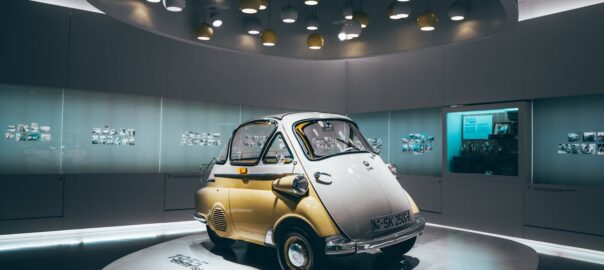If you think the world of automobiles is reserved for those who live life in the fast lane, you’re about to find out that even the most storied auto museums are navigating the web highways. The thought of classic cars conjures up images of glossy paint, the smell of aged leather, and the melodious hum of a V8 engine.
However, with today’s digital landscape, the industry’s virtual presence is as important as the real-world engines themselves.In this post, we peel back the hood of automotive museum marketing to showcase how they’re not just surviving but thriving in the world of hashtags and SEO.
Online Presence of Automotive Museums
Just when you thought the smell of engine oil could never be replaced, automotive museums worldwide have taken to social media and online platforms to create a sensation that transcends the physical barriers of their garages. These institutions have embraced digital branding, ensuring a cohesive and captivating online image that’s as polished as their prized automobiles. This goes beyond mere Facebook pages – it’s about creating experiences and communities that bring their passion for automotive heritage to life.
Platforms like Instagram and Twitter have become the vehicle of choice, where they share not just snapshots but stories, engaging with history buffs and car fanatics alike. Museums know that to capture the attention of the younger demographic, who often can’t make it in person, a virtual strategy with an Arizona digital marketing agency is non-negotiable. And so, they are posting more than just vehicular eye-candy; they’re posting memories, journeys, and the very spirit of the open road.
Content Marketing Strategies
When it comes to showcasing their prized collections, museums have shifted gears from the traditional to the digital. Virtual tours allow visitors from across the globe to take a front-row seat in the presence of iconic automobiles, while blogs take enthusiasts on detailed journeys through the historical significance of each model.
The key to their success? Understanding that content is not just about information; it’s about creating a connection with every turn of phrase and every throttle push of published content.A blend of high-resolution photography, video features, and interactive storytelling transforms the digital content into a time machine, whisking the audience through the decades of automotive history.
SEO Optimization Techniques
Under the hood of a well-optimized website, one would find web developers and marketing professionals, not just carburetors and crankshafts. Museums are keen on leveraging SEO to ensure that when someone googles “vintage cars” or “automotive history,” their museum stands among the top rankings.
Backlinking strategies are employed with influencers and historians who share their love for classic vehicles, enhancing both parties’ online presence.SEO isn’t just about keywords – it’s about creating a web of connections that leads enthusiasts back to the museum’s digital doorstep, and ultimately, through their physical one.
Engagement with the Audience
The online stage is set, and automotive museums are not mere spectators; they are the drivers of their digital destinies. By hosting virtual events, live Q&A sessions with curators and renowned car collectors, and collaborating with automotive influencers, they are ensuring a two-way narrative that keeps audiences engaged and eager for more.These digital endeavors are converting passive appreciators into active participants in the living encyclopedia that is automotive history.
